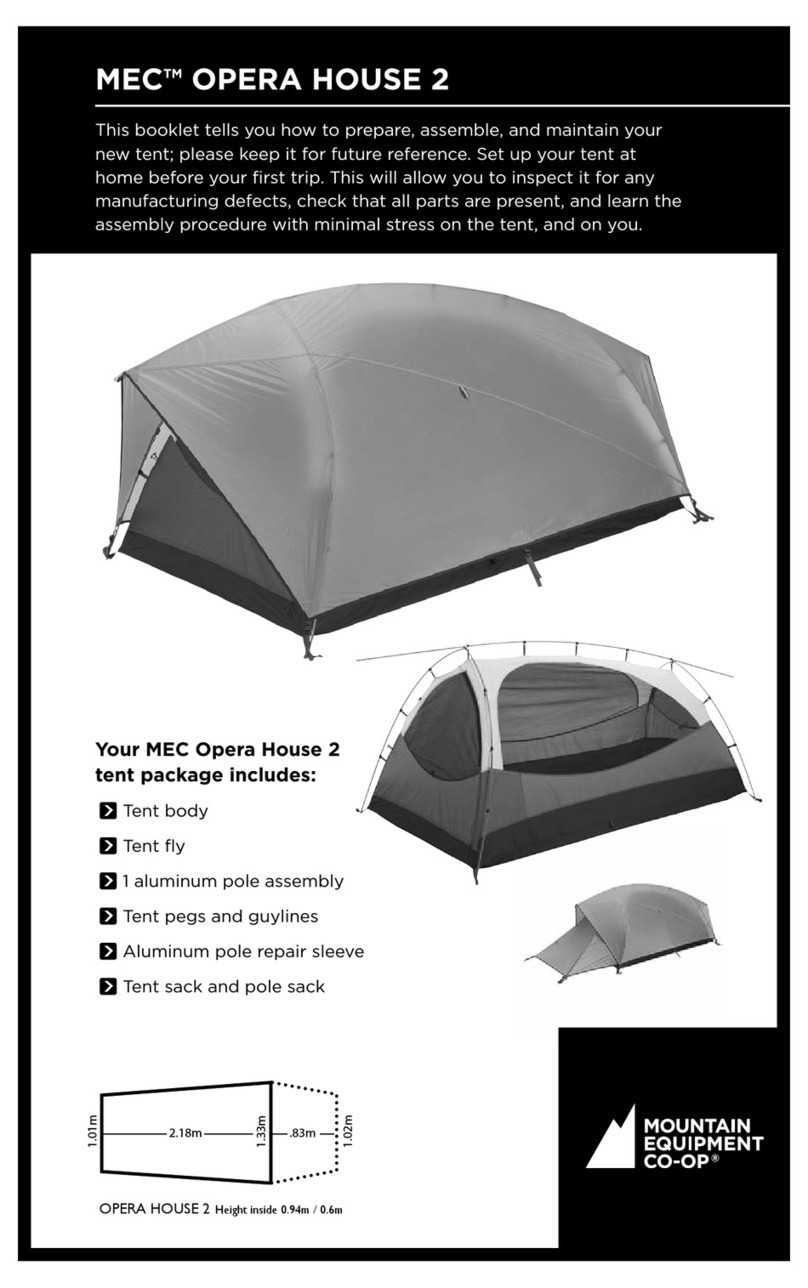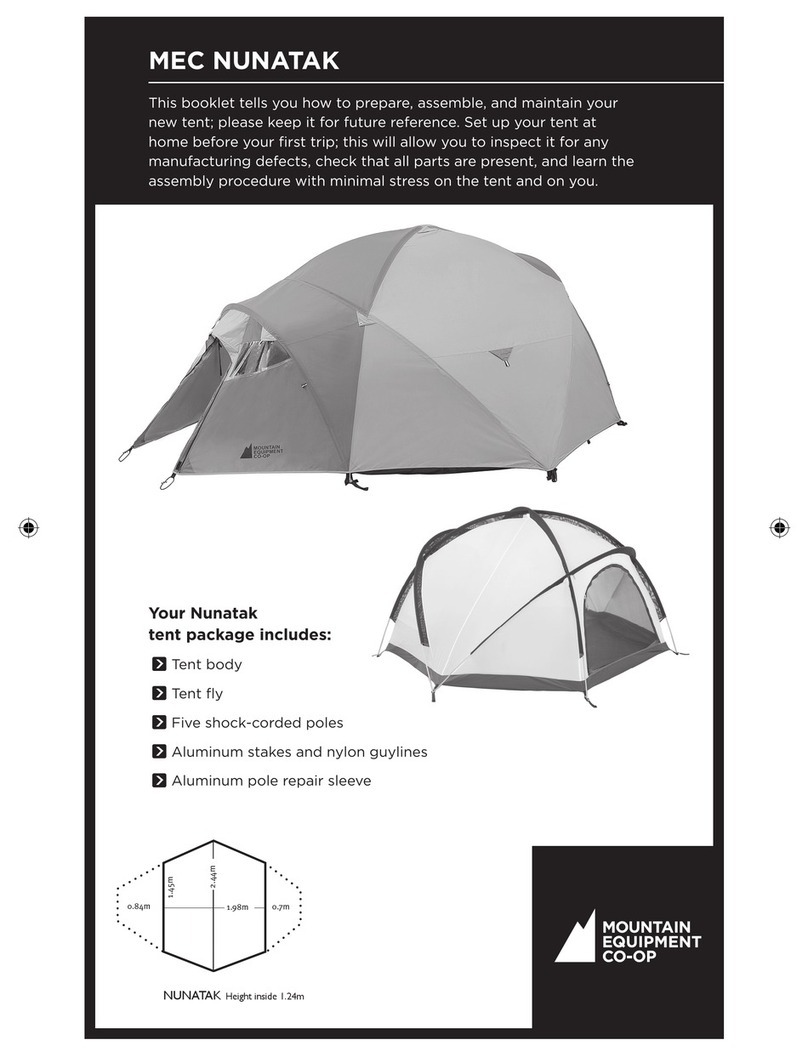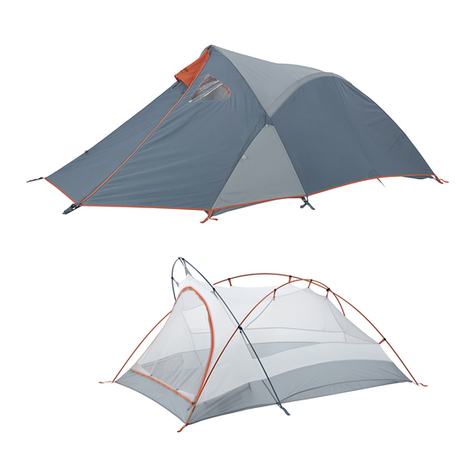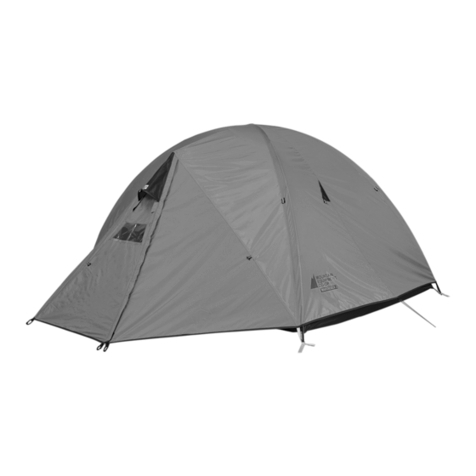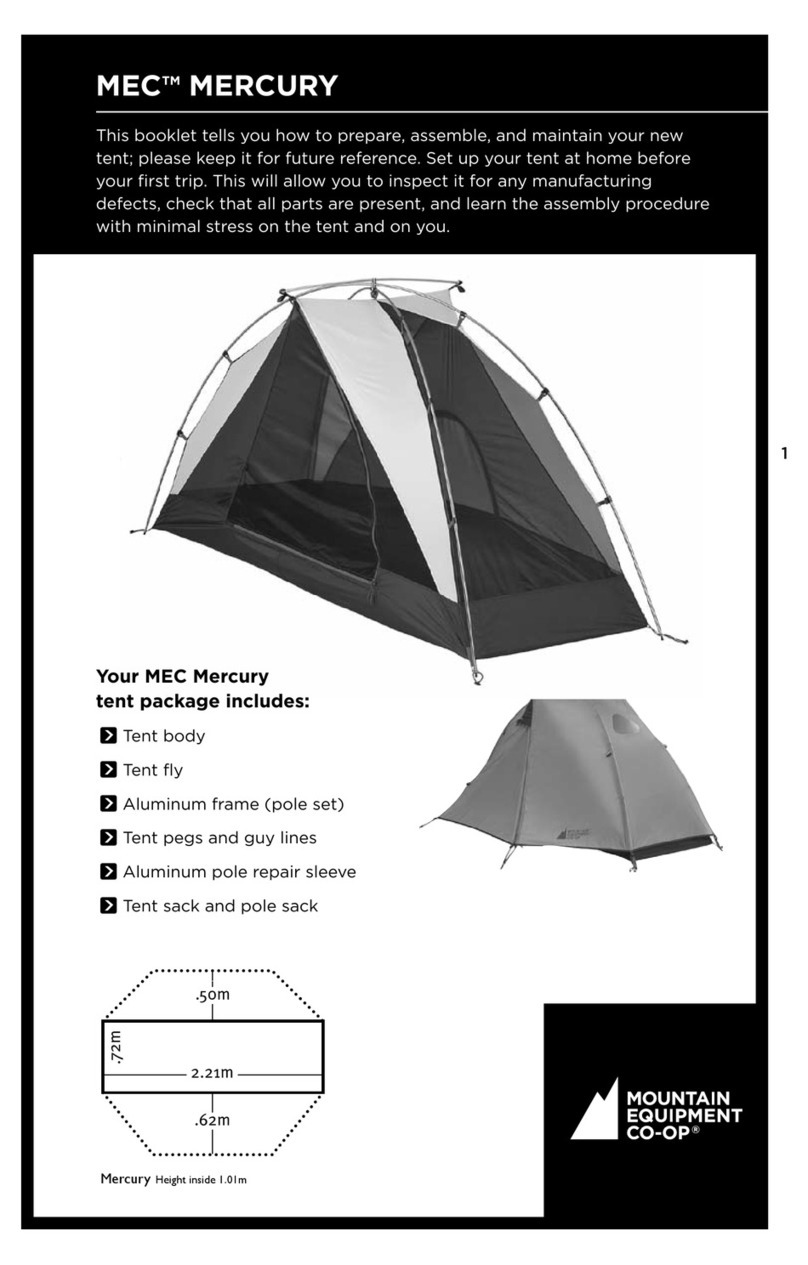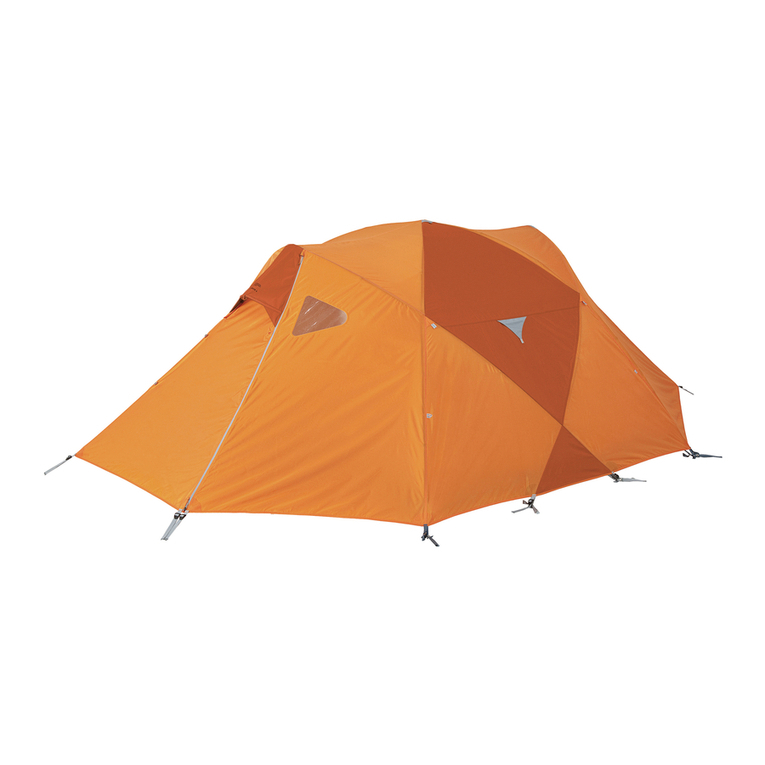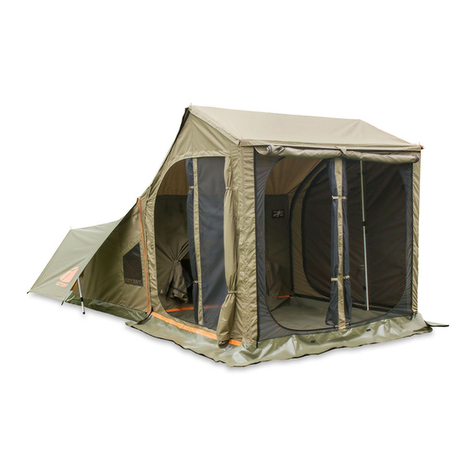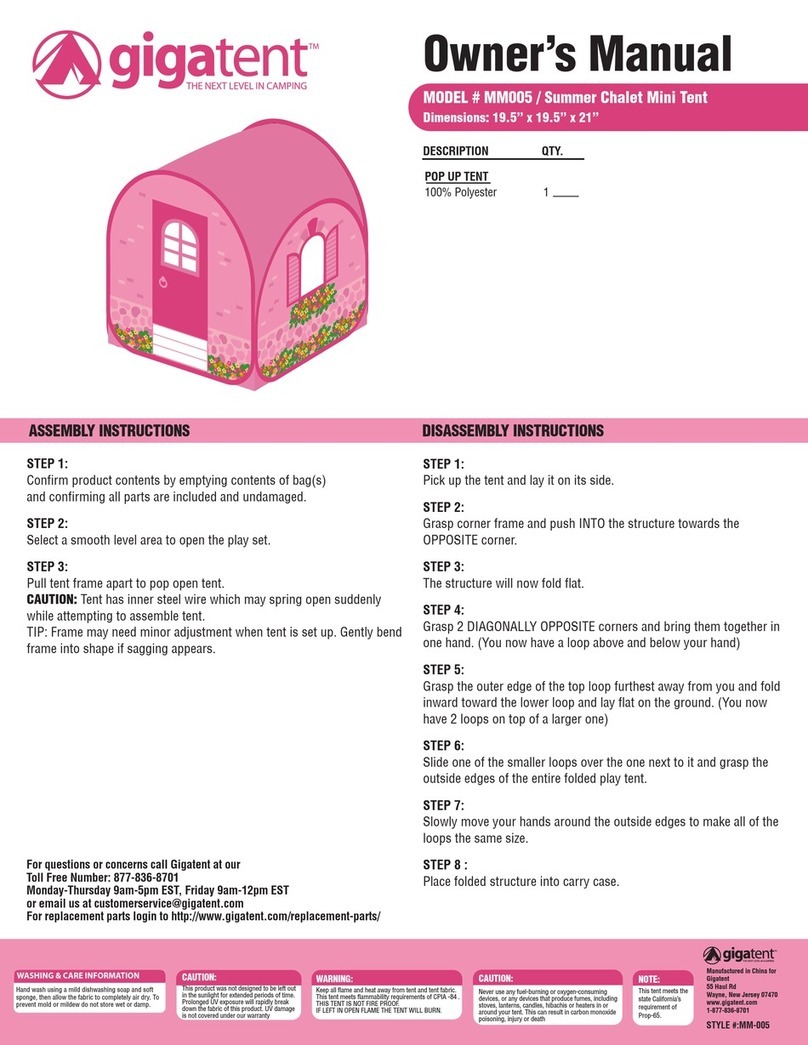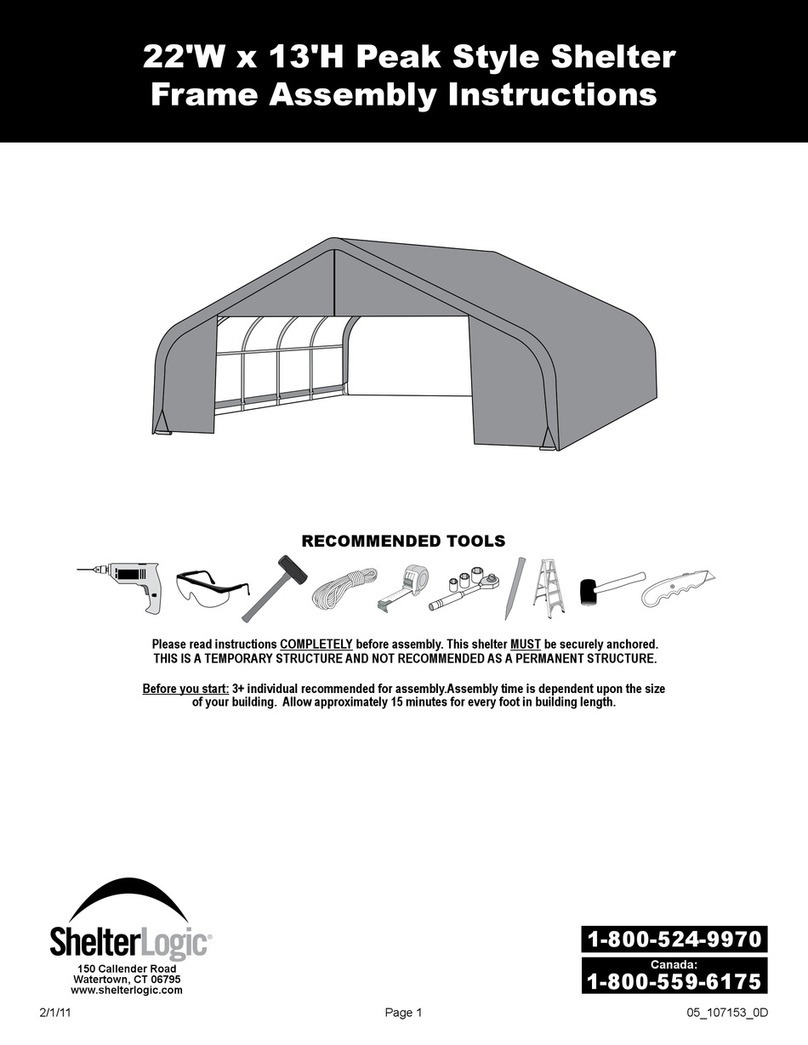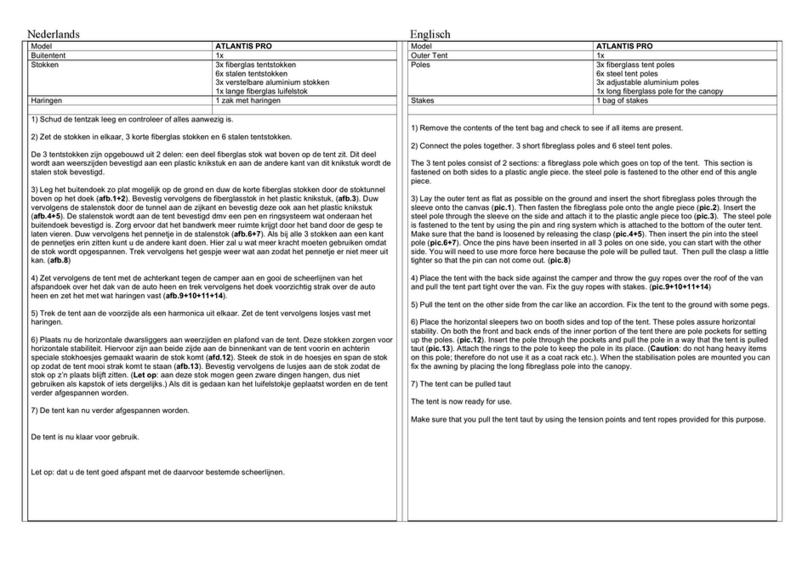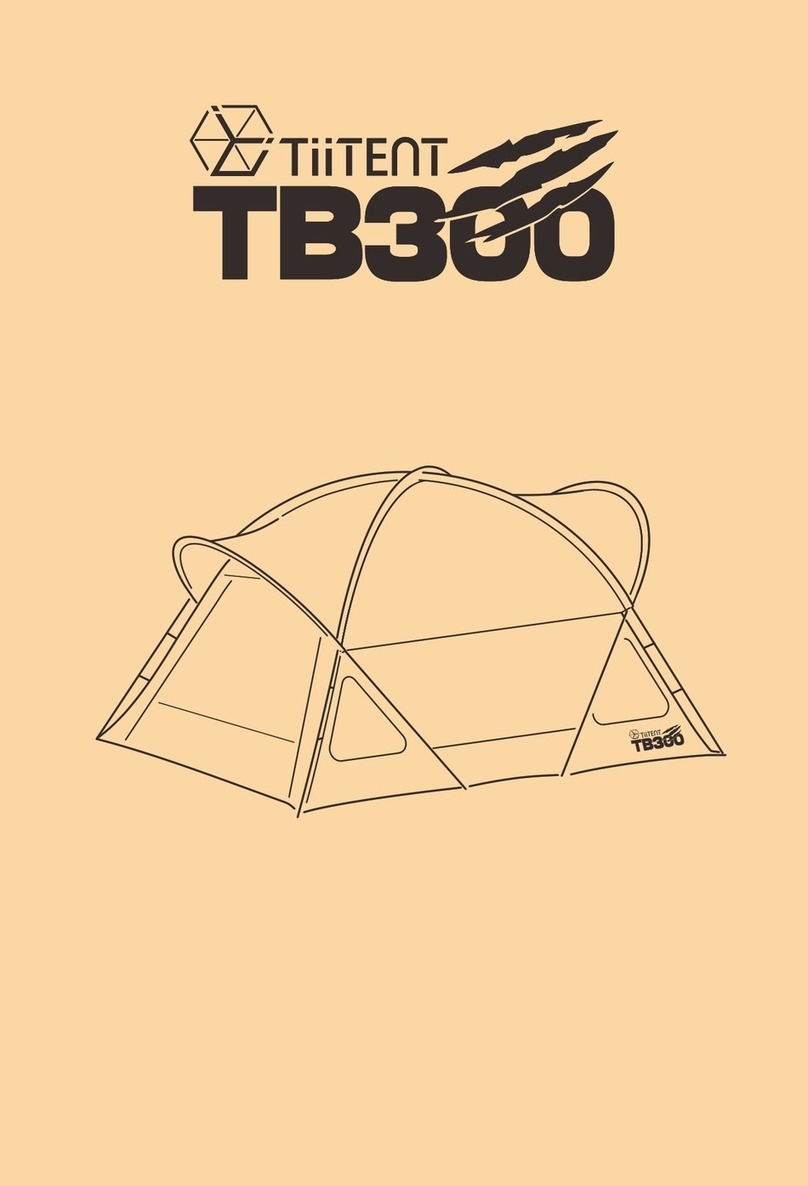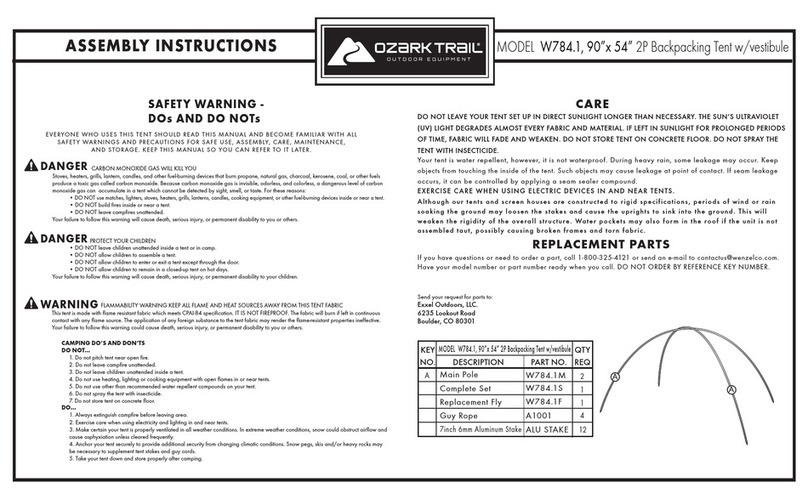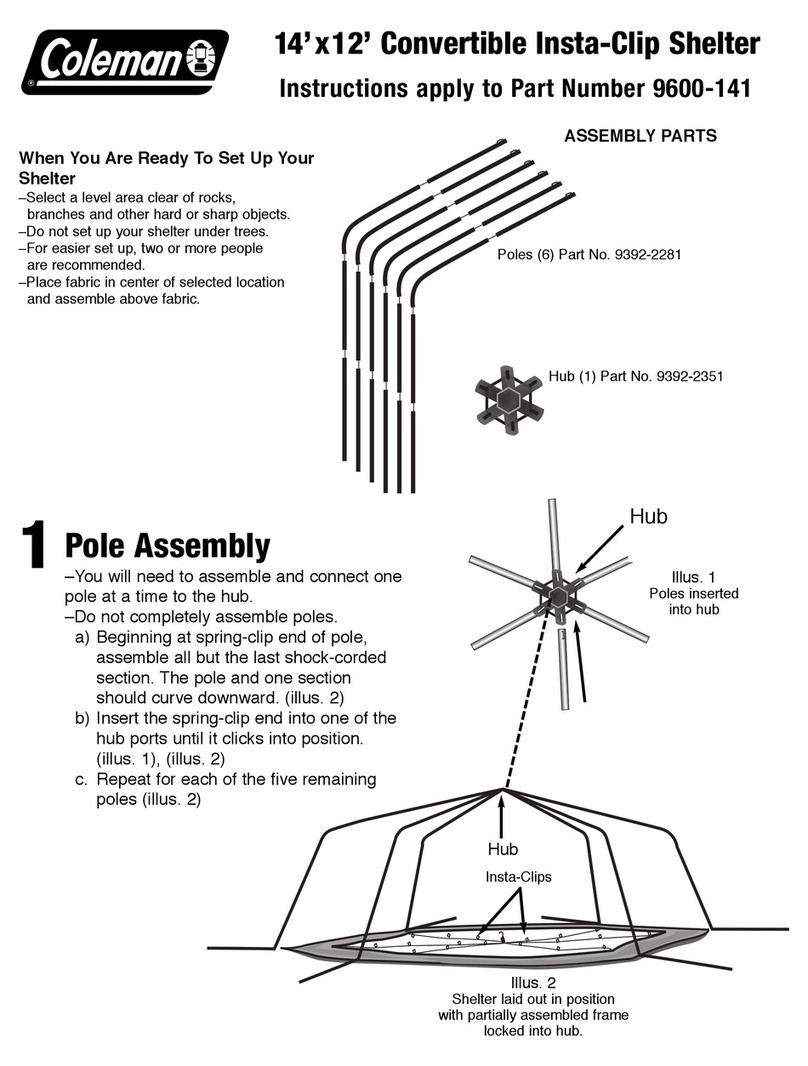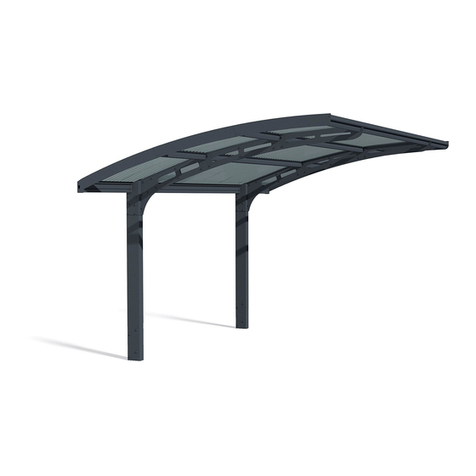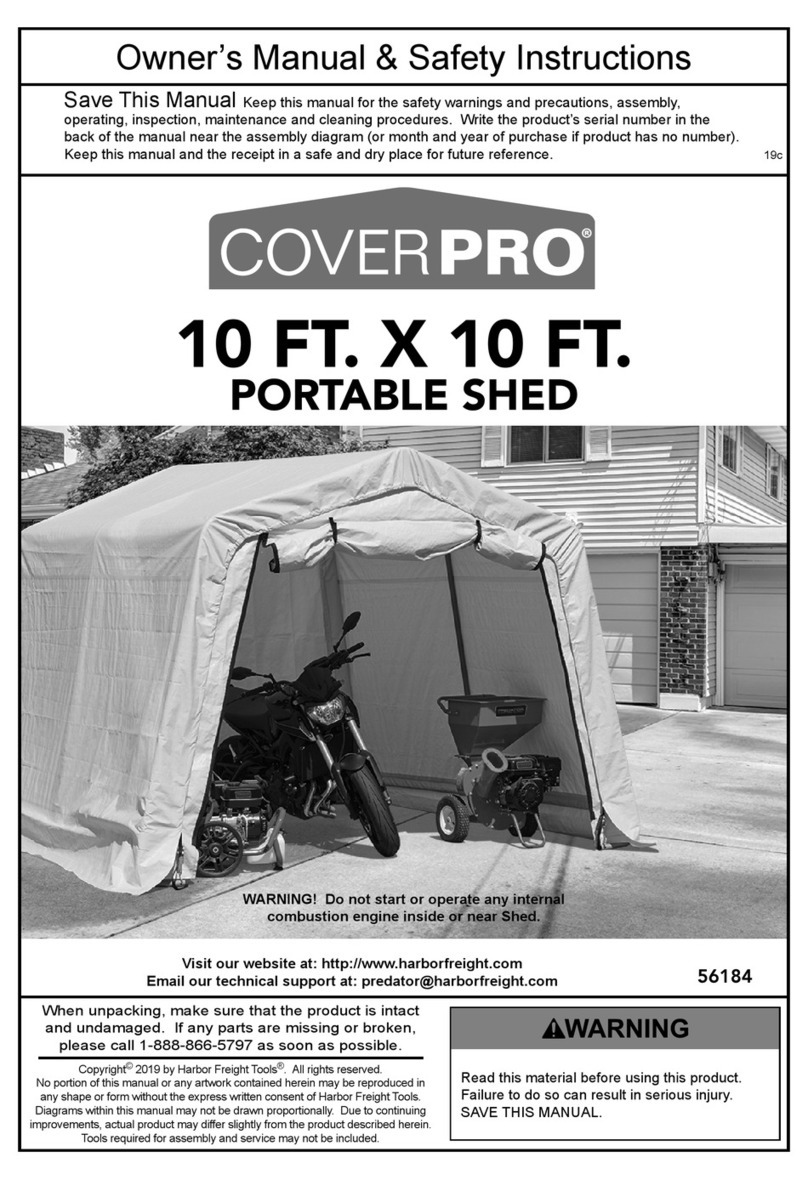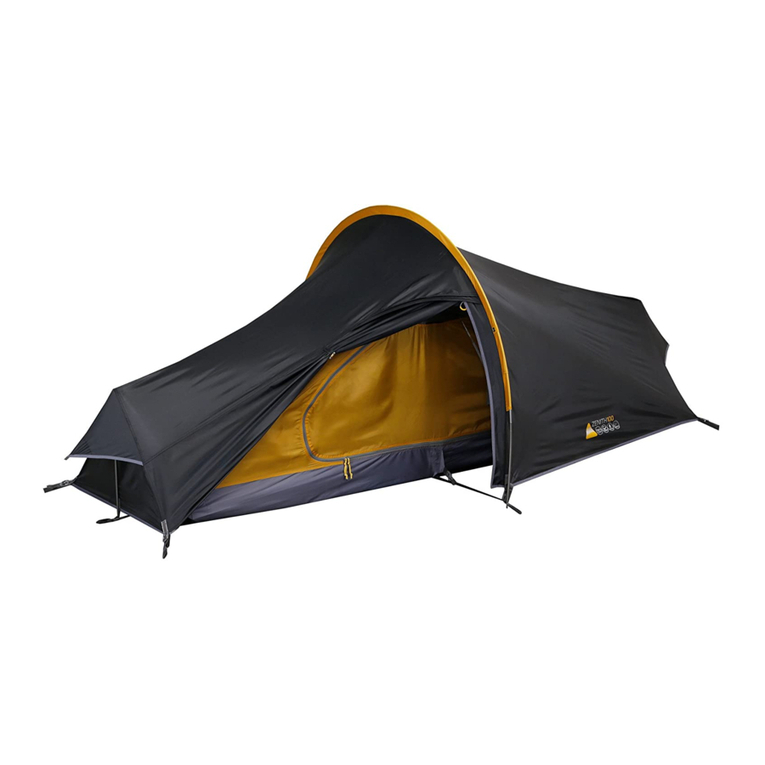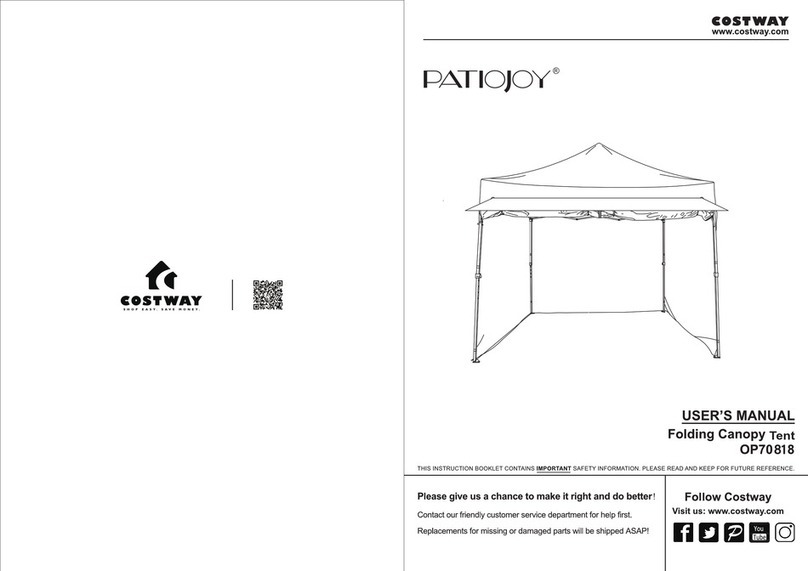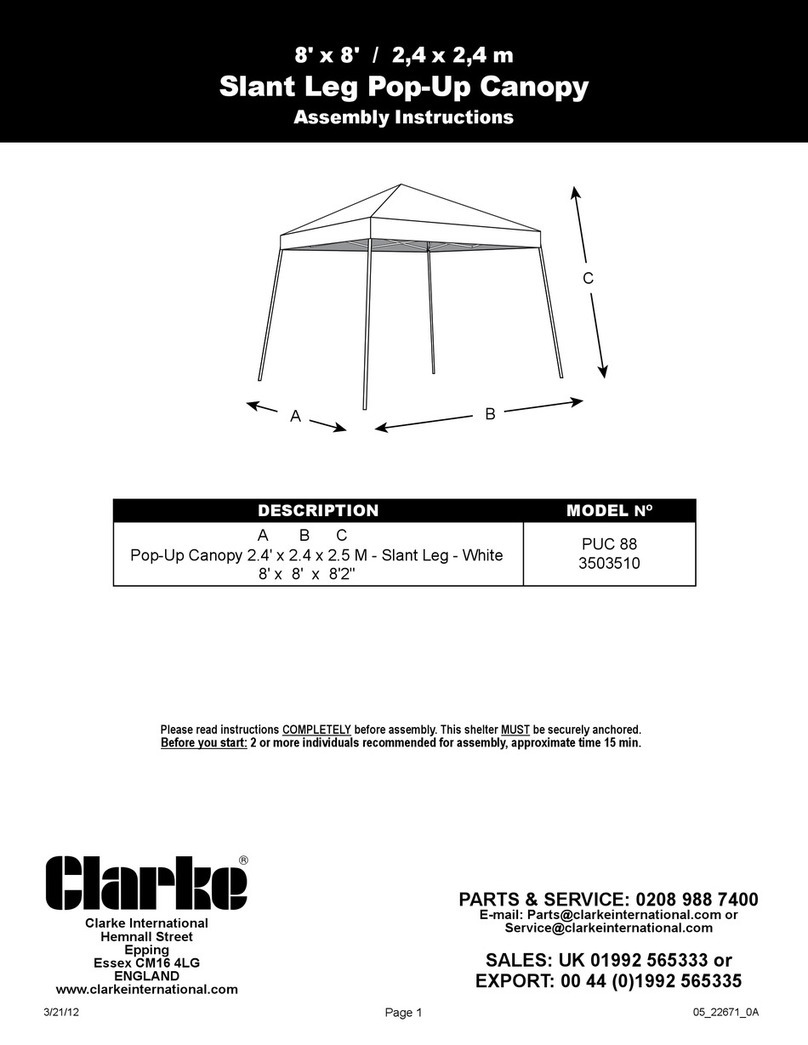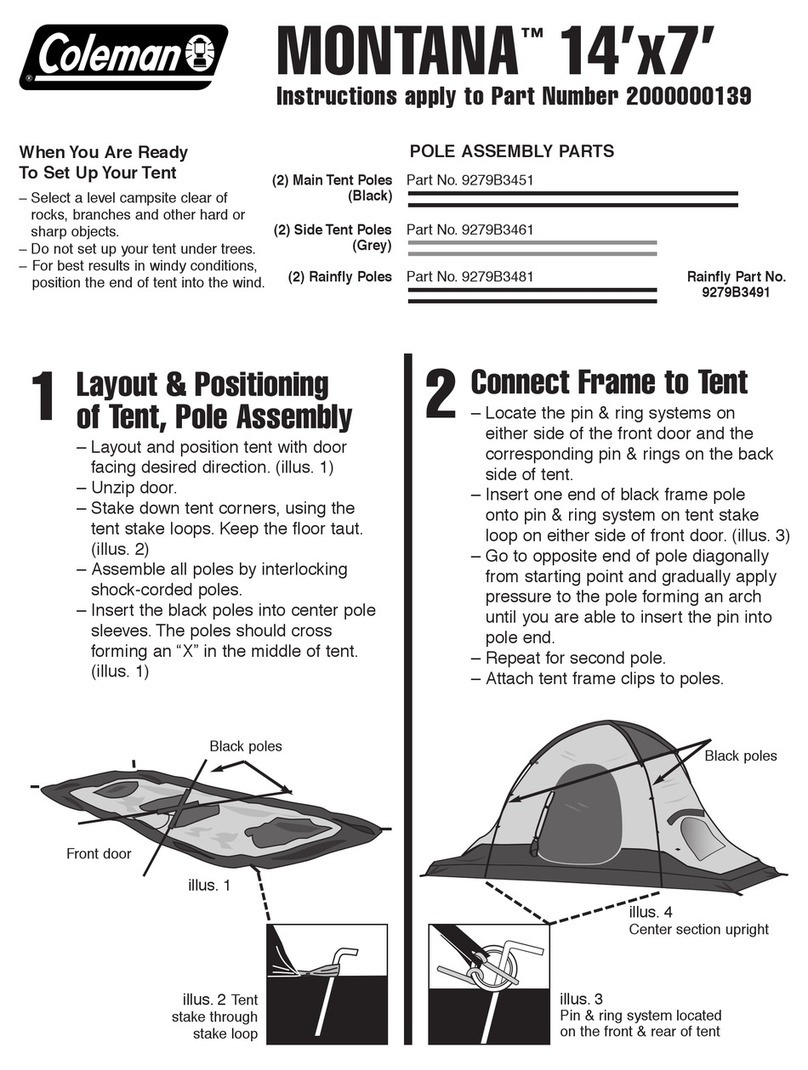
5
underside of the fly to the poles (see Step 7, above.) Guy out the two
guypoints corresponding to these wrap-ties if necessary. For additional
stability, peg out the pullouts at the base of the fly sidewalls.
The Tarn 3 is designed for lightweight, compact, three-season performance.
Keep this in mind when selecting and preparing a tent site: a little shelter
as provided by trees, rock, or snow walls will make for a quieter night’s
sleep under windy conditions.
Anchoring the Tent
The #7001-T6 aluminum stakes included with the tent are suitable for
general use on relatively soft ground. However, in very hard-packed
ground you will need stronger (and heavier!) stakes that can withstand
the force needed to drive them in. On snow, sand, or other loose-packed
surfaces, wider T-Stakes or aluminum snow stakes will hold better; these
stakes hold best buried horizontally. You can also improvise with other
“stakes” (hiking staffs, ice axes, branches, rocks, trees), using the tent’s
stake loops or cord as required.
When packing for your trip, consider the conditions you’ll likely encounter
and what sort of anchors you’ll require. You can often leave several of
the supplied pegs at home and replace them with improvised anchors,
thereby saving weight and space in your pack.
Ventilating the Tent
Proper ventilation is the key to minimizing condensation in any tent. Keep
fabric doors open as widely as the prevailing weather permits. If bugs
or drafts aren’t a problem, leave mesh doors open too. Crack each door
open from the top down; warm, moist air rises and will escape through
high openings. If the design of your tent allows for it, have openings at
both ends or both sides of the tent to allow air to flow through for best
ventilation. On very hot nights, when you are confident there will be no
rain or dewfall, you can leave the flysheet off and use the inner tent alone
as a “bug tent.”
Disassembling the Tent
The most important consideration in taking down a tent is not to stress
the poles and fabrics. First, disconnect guylines and release the tension
from the tent. Next, release all the poles. If your tent has pole sleeves,
push the poles out of the sleeves instead of pulling them out. To minimize
the stress on the bungee cord in the poles and to speed disassembly,
fold each pole in half first, and then fold down towards the outsides, two
sections at a time.
Tarn3 eng.indd 5Tarn3 eng.indd 5 3/4/05 3:49:30 PM3/4/05 3:49:30 PM


